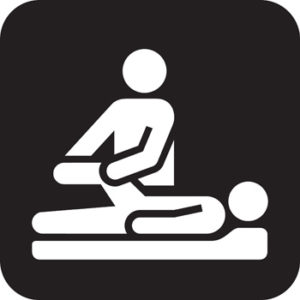How do I answer – Myotherapy compared to Physiotherapy? Part II
 ‘… when answering this question keep it simple and speak about the results not the process. Sometimes patients really do want more detail. So what do you say?’
‘… when answering this question keep it simple and speak about the results not the process. Sometimes patients really do want more detail. So what do you say?’
If the conversation continues, and they are genuinely interested I go on to explain in a little more detail.
I do not open a new topic but simply expand on the first explanation. Something like this:
‘The bulk of research that has been done in relation to musculoskeletal pain has studied ‘inflammation’. There are reams of articles and evidence-based science on ‘inflammation as a cause of pain’. And this is fair enough. It makes sense that this is what has been studied more than anything else. Our bodies’ first response to injury is inflammation > inflammation causes pain > and so if you reduce the inflammation you reduce the pain. Makes sense. Therefore Physiotherapists (again a big generalisation) tend to think of pain in terms of inflammation and treat it with ‘anti-inflammatory’ techniques like ice, rest, ultrasound and so on.
Most chronic pain that lasts months or years in not actually inflammation.
Chronic pain that reoccurs over months or years is usually not inflammation and needs to be treated differently. A lot of the recent science is showing us that myofascial pain, which isn’t actually inflammation, is responsible for most chronic complaints like headaches and reoccurring back pain. So treating this pain as though it is inflammation is not likely to solve it.
After the above explanation, 50 per cent of patients will say: ‘Yeah I had physio and it worked for a little while but didn’t last’. So you have a real living example of what you just explained sitting on your table and it is easy to agree and say: ‘Yep, I hear that a lot. Give me a few treatments, we will do just fine.’
Are you saying that Myotherapy isn’t any good with acute injuries?
Now some of you are saying to yourselves ‘I work in sport, I am a Myotherapist and I deal with acute injuries all the time’.
True.
Myotherapy training is definitely able to treat acute injuries and if this your passion, do it. But if we are asking ‘What does Myotherapy bring to the musculoskeletal health industry that is UNIQUE?’ What is the thing that Myotherapy does better than everything else?
What does Myotherapy bring to the musculoskeletal health industry that is UNIQUE?
I am going for treatment of chronic reoccurring pain every day of the week. I have done placement at the AIS and worked with professional sports teams as well as with the everyday consumer and I discovered that solving chronic reoccurring pain for people is what will make you the guru. Every PT, physio and masseur either is, or thinks they are, an expert in treating acute inflammatory injuries. That’s a lot of competition! Of course latent and active myofascial trigger points cause pain and inefficient movement in athletes as well – of which I have treated heaps – but the bulk of chronic pain caused by such is found among those in sedentary professions and the weekend warriors.
My biggest buzz . . .
For me, and I’m talking personally, I found that the novelty of working with professional athletes simply wore off. Whereas the process of figuring out the seven-year established inefficient biomechanical patterns that are causing the chronic reoccurring symptoms in the everyday ‘Joe’ and correcting the ‘puzzle’ was more intellectually stimulating. In my opinion, this is the real gold.
I’m sold!
I am totally convinced that Myotherapy manipulation provided by an experienced practitioner can resolve chronic pain of this nature in fewer treatments and with longer lasting results than just about any other therapy out there.
So personally, I have chosen not to compete with Physiotherapists on the heavily flooded market servicing acute injuries. Instead I focus on the people that no one else has been able to give lasting relief to. And there is no better feeling than someone saying: ‘That is the first time I have had lasting relief from that pain in 10 years.’

Timothy J. King

